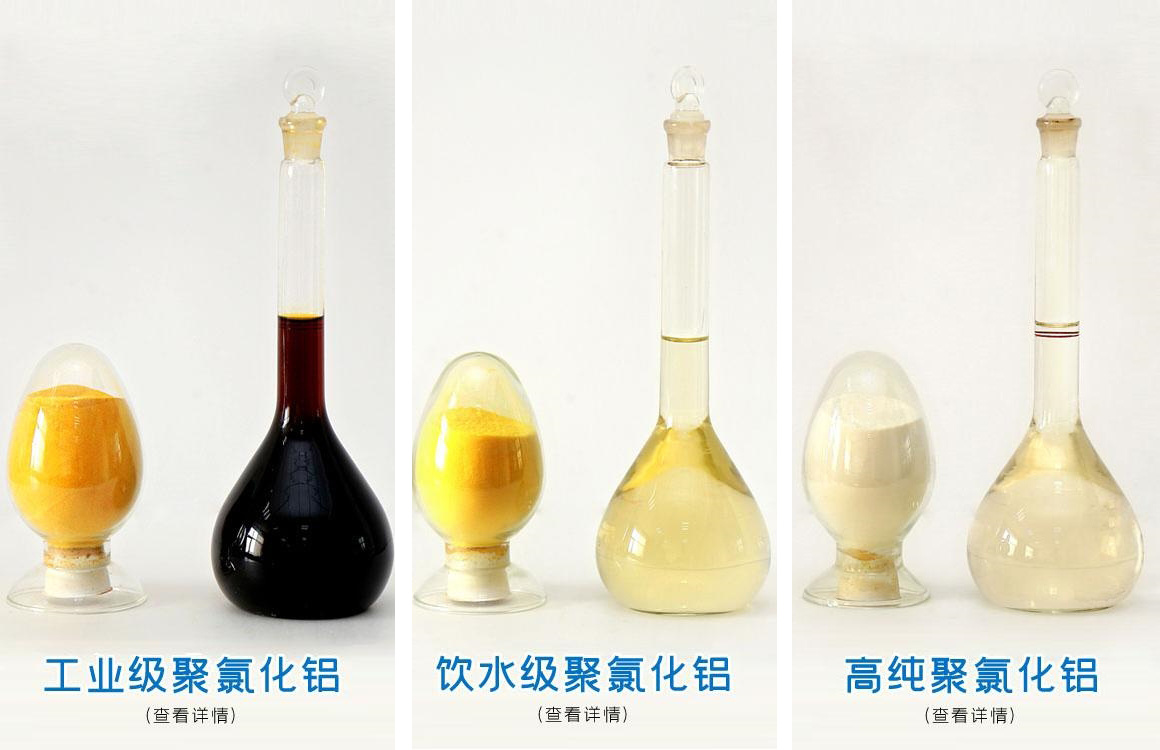Full analysis of composition and content of polyaluminum chloride
Release time: 2025-08-08
I. The core components of polyaluminum chloride (PAC) include:
Aluminum oxide (Al₂O₃): content of 10%~30%, determines the flocculation efficiency, the higher the content, the greater the charge density.
Salinity (B value): about 85% for industrial grade, and 40%~60% for drinking water grade/food grade to reduce the risk of aluminum residue.
Impurity control: heavy metals (arsenic, lead, mercury) and insoluble substances are strictly limited with the increase of grade.

II. Composition standards of different grades of PAC (including liquid and solid data)
Level/form | technical grade | Drinking water levels | Food grade |
Liquid properties | Al₂O₃ content: 6%~10% Water insoluble matter: ≤1.5% Appearance: Brownish viscous liquid, containing impurities and precipitates | Al₂O₃ content: ≥10.0% 1 Heavy metal limit: arsenic ≤ 0.0005%, mercury ≤ 0.00001% Appearance: colorless to pale yellow transparent liquid | Al₂O₃ content: ≥10.0% (after conversion) Heavy metal limit: arsenic ≤ 0.0001%, close to 0 Appearance: very light yellow transparent liquid, no visible impurities |
Solid properties | Al₂O₃ content: 20%~26% Water insoluble matter: ≤1.5% Process: Drum drying, brown particles | Al₂O₃ content: ≥29.0% Heavy metal limit: arsenic ≤ 0.0005%, lead ≤ 0.001% Process: Spray drying, white/d淡黄色 powder | Al₂O₃ content: ≥29.5% Heavy metal limit: arsenic ≤ 0.0001%, heavy metal trend Process: multi-stage plate and frame filter, pure white powder |
Key differences:
Industrial grade: the lowest liquid Al₂O₃ content (6%~10%) and more solid impurities, low cost but high sludge amount by 20%.
Drinking water level: liquid should meet the density of 1.12g/cm³ or more, and solid must pass the atomic fluorescence spectrometry to detect heavy metals.
Food grade: the solid dissolution rate is twice that of industrial grade, and the liquid transportation cost is high.
III. Influence of form on performance and economy
characteristic | liquid PAC | solid body PAC |
technical grade | It is highly practical and has a low cost of 30% per ton Impurities and precipitates can easily block pipes | The shelf life is 12 months, suitable for storage Sludge volume increased by 20%, transportation radius limited |
Drinking water levels | It can be dissolved and used immediately, which is suitable for automatic addition in water plant Valid for only 3 months | Transportation carbon emissions are 40 percent lower than liquids It needs to be stirred and dissolved, but it meets the emergency pollution backup requirements |
Food grade | No residual risk, suitable for instrument cleaning Transportation costs are high | It is used in oral preparations through aluminum analysis test by FDA The production cost is 2~3 times that of industrial grade |
Related Blog
Reception of philippines clients
2025-04-11 15:00
Solution of floc texture frivolous in water treatment process
2024-05-16 00:00
Full analysis of composition and content of polyaluminum chloride
2025-08-08 09:24



